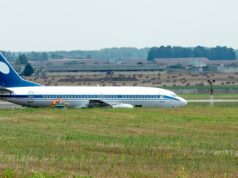
Valuable and critical in concert
Editor’s Note: We welcome Vath Publishing to our pages with this and future articles written to facilitate one’s transition to the airline industry. Publishers of a book titled, Airline Transition Manual, Vath will provide our readers with the insights to assist anyone making the shift into the airline industry.
If you are currently in the airline industry, or generally in corporate America, you have probably run across the acronym DEI over the past few years. It stands for Diversity, Equity, and Inclusion and is a hot-button item for most Human Resources (HR) departments across the country. Inevitably, you will be required to take part in some type of training geared toward mass distribution – meant to cover every employee at the company. This training will likely speak little to you in your role as a pilot, but it has value nonetheless. While the goal of these programs is mainly driven to ensure that enough boxes are checked to protect the company from lawsuits, the intent behind DEI is valuable, and has a higher purpose for flight-deck safety than most people would give it credit.
DEI is the catch-all phrase for recognizing differences in the workforce, ensuring everyone has an equal opportunity to a just culture, and that all are included and have a sense of belonging. This is a highly generalized statement for a concept that really works to ensure that the workplace/school is fair and everyone has a voice. By leveraging everyone’s talents, the organization will thrive because its people thrive.
If we think about it, CRM (Crew Resource Management) is one of the original versions of this concept. We understand that expanding the pool of voices and getting more minds on a task will ultimately create a safer and more reliable outcome than only having the captain dictate orders. The foundation for this is opening and maintaining lines of communication between all parties. So why bring up DEI?
As leaders (and future leaders), one of the most critical ways to maintain open lines of communication is to ensure that everyone feels comfortable to speak and be in your presence on the plane. It’s one thing to say you run an open and inclusive flight deck, but it’s another thing entirely to live it. How you speak about the world around you, other people you see, and current events can affect others’ willingness to bring things up. Whether you know it or not, everything you say around your partner-pilot will create another filter for them to go through before they decide to say something.
For instance, if someone feels you are easily offended by what someone else is wearing, then will you really be open to a difference of opinion about going around the weather? If you started off the flight by railing against the idiots in congress (on either side of the aisle) and how stupid their followers are, can you really be sure your fellow pilot is going to point out your deviation of SOP or your incorrect programming of the FMS in case they are wrong and fear that you will take them for an idiot? Maybe, but the chances of an open forum for communication have been lowered.
We know the idea is to keep controversial conversations off the flight deck, but that should really extend to most other off-handed comments we may not realize we are making. This isn’t intended to be an article about censoring oneself. But, for the sake of open and frank communication on your next flight, perhaps consider what phrases or off-handed statements may close off someone else to speaking up. The result could save you from having to fill out paperwork … or worse.
No matter which seat we are sitting in, we can all do our part to make sure everyone feels included and equal.




















































